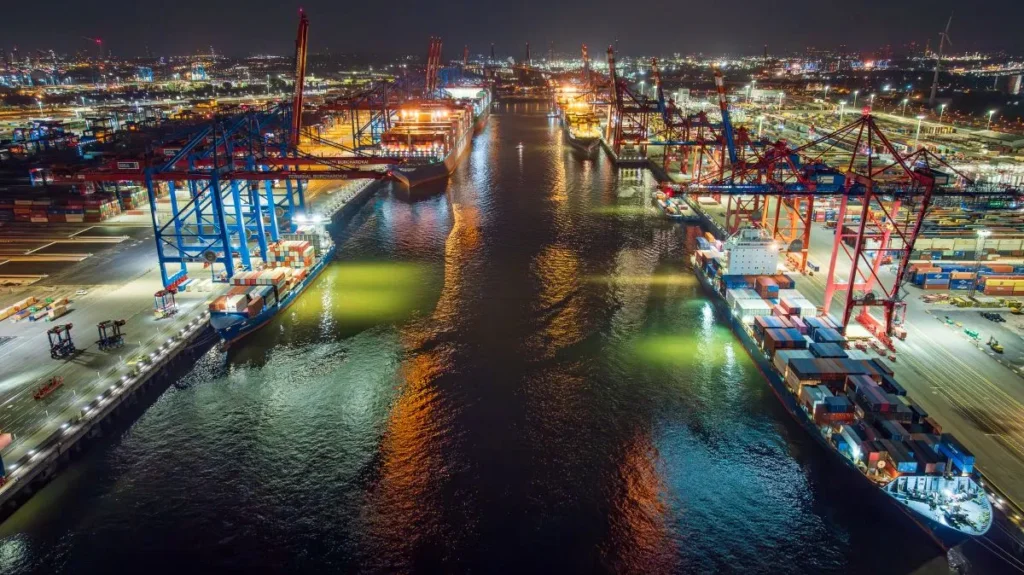The Port of Hamburg is set to undergo a major expansion, with works planned to widen the Waltershofer Hafen turning basin and create new terminal yards to support growing container volumes. The project, overseen by the Hamburg Port Authority (HPA), is expected to be completed by the mid-2030s.
A key component involves widening the turning basin from 480 to 600 metres, making it easier for large container ships (currently 90% of which call at Waltershofer Hafen) to manoeuvre safely. This measure is designed to boost navigational safety, vessel handling efficiency, and resilience along the River Elbe.
New land will be developed for terminal operations near the Container Terminals Buchardkai (CTB) and Hamburg (CTH), with the goal of improving workflows and enabling automation and electrification. The port aims to transition to a climate-neutral operation by 2040.
Jens Meier, CEO of the Hamburg Port Authority, said the project “represents a vital investment in [the port’s] long-term competitiveness” and will also “lay the groundwork for the next steps towards a climate-neutral port.”
The total cost of the public infrastructure works is estimated at €1.1 billion, with part of the funding coming from public sources. To comply with EU regulations, the HPA is voluntarily conducting an upstream ex-ante state aid review, with results expected in 2026.
Terminal operator Eurogate has signed a preliminary lease agreement for the new areas and plans to invest at least €700 million in expanding the Container Terminal Hamburg. Construction is scheduled to begin after the land is handed over and is expected to be completed within two years.
In case you missed it: More checks, more fines: How hauliers can avoid huge penalties at EU borders
The new site, adjacent to the existing terminal, will remain in public ownership and be leased under market conditions. It will be connected to Hamburg’s road and rail network and designed for automated container handling using electric, autonomously guided vehicles.
Soil will be excavated from the eastern headland north of the Petroleumhafen and the Bubendey bank to create the operating space. The existing port basin will then be infilled and sealed off from the river by a dam. All necessary planning approvals are in place, and legal challenges have been resolved.









